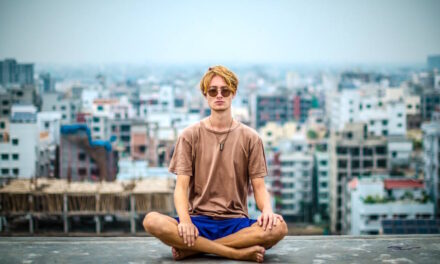BACKGROUND
On Saturday, March 20, 2021, in more than 100 major cities around the world there was a protest known as Worldwide Demonstration. Central themes were freedom, peace, and human rights but the accent was put against the pandemic measures which cripple the world’s economies and social life in order to prevent the further spread of the virus. The organizers based in Germany have the following statement on their website:
“Demo on March 20 2021 – we will stand side by side on a worldwide demonstration with people from all over the world for our freedom! One day – all together! We will make it clear that the government’s attempts to divide us have been unsuccessful. Together we will ALL be on this demo to demonstrate against the current Corona measures! We have at least ONE COMMON GOAL! With live streams from different countries, together we will form the biggest worldwide demonstration of the current time! Because #wearenotalone.”
AFTERMATH
Although the organization was successful and mobilized hundreds of thousands of citizens around the globe the critique in media was apparent due to protesters not respecting measures against the spread of the virus namely by not wearing masks or respecting social distances. Moreover, in few locations, local authorities used police force to suppress protesters with force and violence. Although the main organizers did not go into the details regarding the causes of the pandemic, many local organizers included groups with rather extreme points of view including global conspiracy and plandemic theories. However, there were instances of Worldwide Demonstration in which local organizers did respect the preventive measures and used the platform to inform the general public about the implications which the pandemic and its measures have on human rights and economic freedom.
In democratic systems whatever the reasons for protesting may be, one may choose to do so in public as long as it is conducted peacefully. The context of the pandemic obviously puts massive protests in question due to the increased risk of infection. Contrary to popular belief that may not be the reality (as explained below) and should not be used to suppress the democratic right to protest.
THE GOLDEN MEAN
If the current norms include at least wearing masks if not respecting social distancing which is quite impossible during mass events like protests, then it should not be a huge problem to respect such norms. It is quite clear that for those that oppose the measures masks represent the symbol of oppression. Therefore, not wearing a mask represents a central theme of such movement and it is obvious it will be used to send a direct message to authorities. On the other side for those who support the measures or at least take the pandemic seriously, masks represent the symbol of tolerance and prevention against potential infection. Not respecting the norm of wearing a mask seems ignorant and may even feel threatening.
In order to secure the sustainability of more similar protests against the measures in near future, it is essential to organize such events by at least respecting the mask norm. Although wearing a mask may feel like submitting oneself to questionable and potentially tyrannical authorities, the norm also serves as an amulet of protection against applying a physical force for suppressing protesting events. It takes away any argument from the authorities to prevent such events from occurring in the future. In addition, this norm in place will attract a far wider scope of the public to join the movement thereby strengthening its influence and outreach. All these factors are far more important for securing safe ground, higher inclusion, sustainability, and success for Worldwide Demonstration and similar events compared to the cost. If sacrificing masksless freedom is the only cost for achieving these benefits it should be quite logical to pay that cost.
Under our masks, in the eyes of authorities, we are like Anonymous and may say or protest against whatever we like whether it is “Kill the Bill” or general concern about implications of measures on economic and human freedom. And in the eyes of the more conservative public, our masks serve as a business suit. Whether you like it or not more people will listen to what you have to say. Your arguments will be taken more seriously and the possibility of converting your audience will be much higher.
PROTESTS DO NOT REPRESENT HEALTH THREAT
There are quite many concerns about the possible devastating influence of protests and similar public events that include mass gatherings on increasing the spread of the virus. Fortunately, at the dawn of the pandemic, we already had major protesting events which brought many lessons in that regard: the Black Lives Matter movement.
Following the BLM events which took place all over the USA the research was conducted in order to answer all risk concerns. The paper headlined “Black Lives Matter Protests and Risk Avoidance: The Case of Civil Unrest During a Pandemic” was widely reported in popular newspapers so for example Guardian published “Why protests aren’t as dangerous for spreading coronavirus as you might think“, Modern Healthcare published: “Little evidence that protests spread coronavirus in U.S.”, Healthline published: “Why the Black Lives Matter Protests Didn’t Contribute to the COVID-19 Surge” and Cato Institute published: “In addition, we find no evidence that net COVID-19 case growth differentially rose following the onset of Black Lives Matter protests, and we even find modest evidence of a small longer-run decline in case growth.”
This conclusion should not be taken solely for justifying the denial of social distancing in general because there are many factors that influenced the successful outcome of BLM movement in relation to a number of infection cases. At the same time, so far there is no strong evidence to suppress or completely outlaw public protests for safety reasons. It is important to keep in mind that many BLM participants did in fact wear masks, limited their mobility after they were done protesting, and went to testing and self-isolation.
CONCLUSION
Worldwide Demonstration truly represents one of the biggest protests in the midst of the pandemic. The organizers and local supporters have succeeded in mobilizing citizens around the world to come out on the streets united by similar causes. Despite widespread critiques due to “irresponsible” social behavior, hopefully, there will be many lessons learned by both opposers and proponents of safety measures. The public discourse is already taking place and putting social media on fire. The platform deserves congratulation and respect especially if its organizers apply lessons for the second run. Organizing protests and mobilizing citizens by any means has always been a tremendously hard task. New actors in this domain should always be welcome and given an opportunity to learn from their mistakes.










